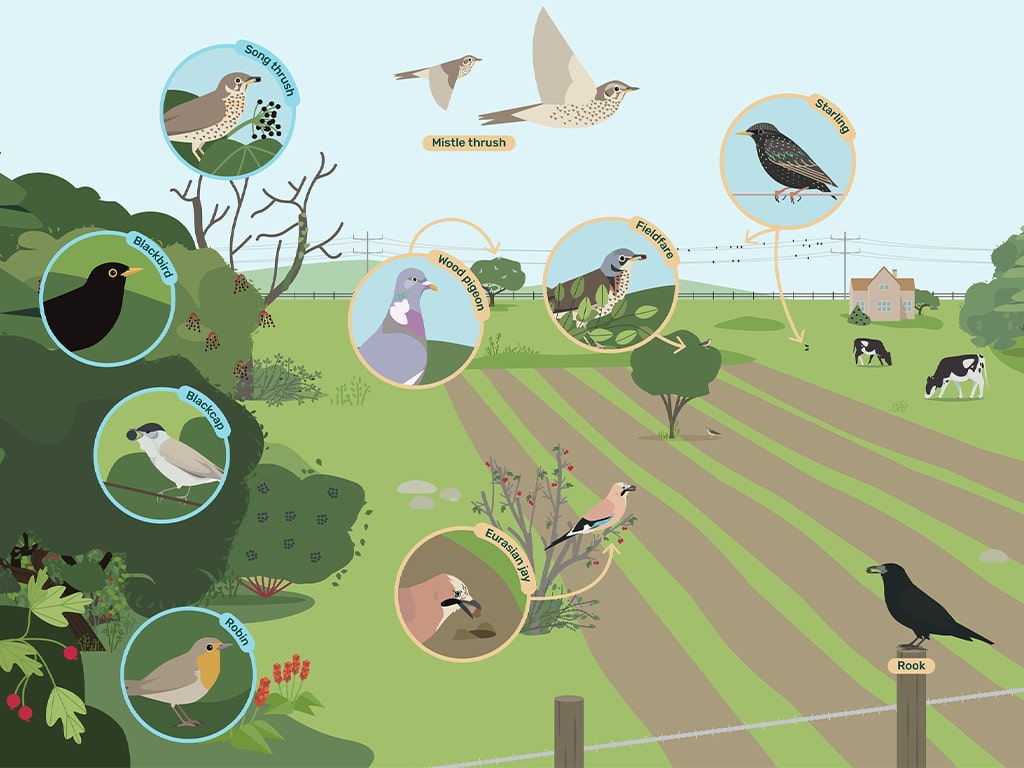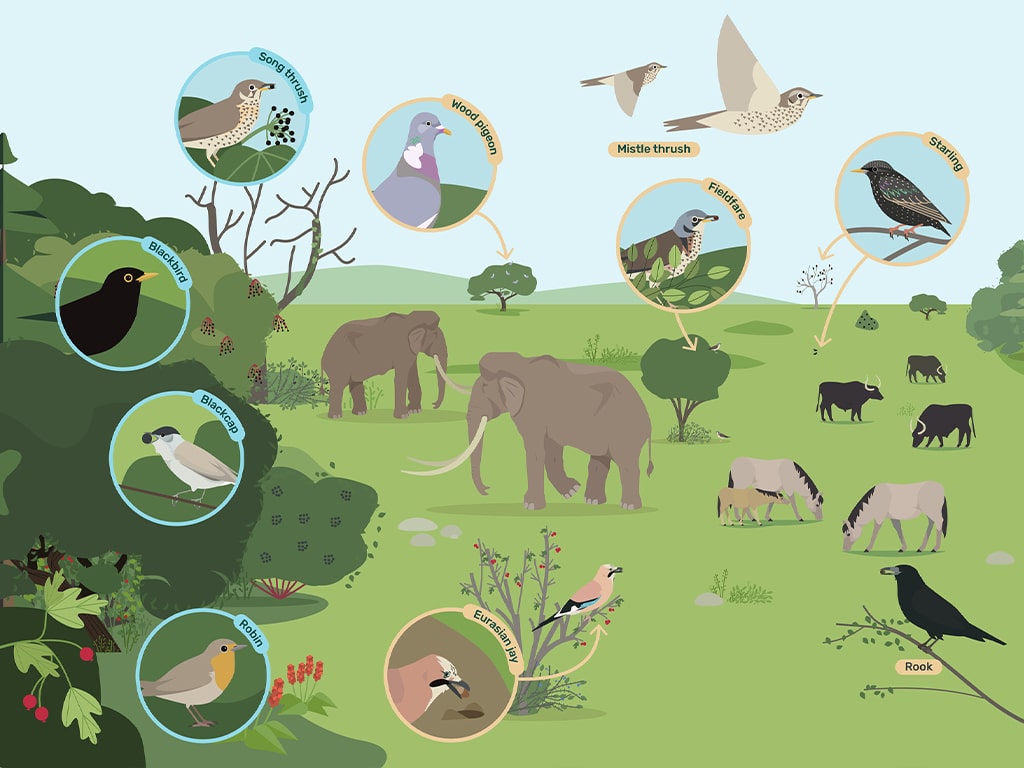How birds spread seeds beyond forests
A new study reveals how birds help disperse seeds outside forests just as they did in ancient Pleistocene landscapes. the research highlights the role of avian seed dispersers in maintaining biodiversity across Europe.

A fascinating study by Juan P. González-Varo, titled “Avian seed dispersal out of the forests: A view through the lens of Pleistocene landscapes,” sheds light on how birds have historically shaped Europe’s ecosystems by spreading seeds—both in dense woodlands and open habitats. The research challenges the long-held belief that Europe was once covered by uninterrupted ancient forests, instead proposing a mosaic of grasslands, light woodlands, and forests maintained by now-extinct megaherbivores.
Reimagining Europe’s Ancient Landscapes
For decades, scientists believed temperate Europe was once blanketed by dense, unbroken primeval forest. However, mounting evidence from paleoecology and fossil records now suggests a very different past. During the Pleistocene epoch (2.6 million to 11,700 years ago), Europe’s landscapes were dynamic mosaics of:
- Open grasslands
- Scattered light woodlands
- Denser forest patches
This diversity was maintained by enormous grazing animals called megaherbivores—including straight-tusked elephants (Palaeoloxodon antiquus), wild horses (Equus ferus ferus), and massive aurochs (Bos primigenius). These landscapes allowed light-dependent plants—such as hawthorns (Crataegus spp.), blackthorns (Prunus spinosa), and oaks (Quercus spp.)—to thrive. Many of these plants relied on birds to disperse their seeds, a partnership that persists today.
How birds disperse seeds today
In these patchwork landscapes, birds played (and still play) a crucial ecological role by dispersing seeds through two main mechanisms:
- Endozoochory (internal transport):
- Fruit-eating birds like thrushes (Turdus species), robins (Erithacus rubecula), and starlings (Sturnus vulgaris) consume fleshy berries.
- Seeds pass through their digestive systems and are deposited elsewhere, often far from the parent plant.
- This benefits plants like hawthorns (Crataegus), hollies (Ilex aquifolium), and brambles (Rubus).
- Synzoochory (external transport):
- Corvids including Eurasian jays (Garrulus glandarius) and magpies (Pica pica) collect and cache nuts and acorns.
- While they retrieve many stored seeds, forgotten caches allow oaks (Quercus) and hazels (Corylus) to germinate in new locations.

Representation of habitat use by avian seed dispersers at a contemporary anthropogenic landscape in temperate Europe.
From past to present: A resilient system
The study reveals remarkable continuity in these ecological partnerships. Even today, in Europe’s human-dominated landscapes where forests are fragmented by agriculture, birds continue dispersing seeds both within woodland patches and out into open areas like:
- Pastures with scattered trees
- Hedgerows
- Abandoned fields
Key findings include:
- Different bird species specialize in dispersing seeds to different habitats (forest interiors vs. open areas)
- Larger, more mobile birds (e.g., wood pigeons Columba palumbus) are particularly important for long-distance dispersal
- Thorny shrubs like blackthorn (Prunus spinosa) still act as “nurses” for young trees by protecting them from grazing animals

Representation of presumed habitat use by avian seed dispersers at a Late Pleistocene landscape in temperate Europe.
Why this matters for conservation
Understanding these ancient ecological relationships has crucial implications for:
1. Rewilding Projects:
Reintroducing large herbivores (like European bison) could help restore more natural seed dispersal patterns and habitat diversity.
2. Sustainable Agriculture:
Maintaining scattered trees and hedgerows in farmlands supports seed-dispersing birds, promoting natural woodland regeneration.
3. Climate Change Adaptation:
By facilitating plant movement, birds help vegetation gradually shift ranges in response to climate changes—a process that may become increasingly important.
Looking to the Past to Protect the Future
This research beautifully demonstrates how deep ecological knowledge can inform modern conservation. By recognizing that many European plants and birds evolved together in open, heterogeneous landscapes—not dense continuous forests—we can better manage ecosystems for resilience in our rapidly changing world.
The study also suggests that current bird-mediated seed dispersal, while still effective, operates in a system missing its original megaherbivores. This historical perspective helps explain why some conservation challenges exist today and points toward more holistic solutions.